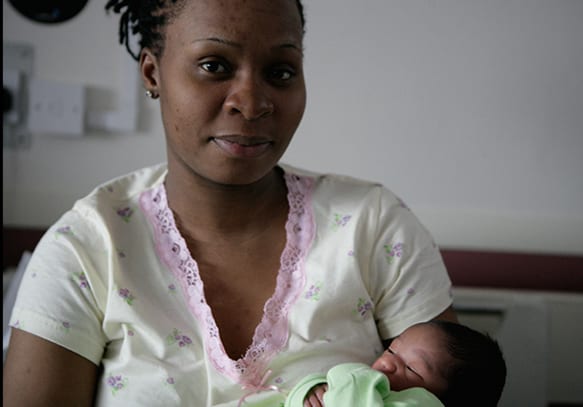Transcript – What is a mucus plug?
This information is about the mucus plug that you might see at the end of your pregnancy, as your body prepares to go into labour.
The first stage of labour starts with the onset of regular contractions along with the dilation or opening of the cervix (or neck/entrance of the womb), and ends when the cervix is fully open, said to be 10cm. It can be broken down into the latent and the active first stage. The latent phase is the early beginning of labour, which consists of irregular contractions that can vary between being weak or stronger.
The active part of the first stage is when the contractions become regular and stronger and the cervix continues to open wider than 4cm. The cervix needs to thin out and open for the baby to come out, and this is what you can feel and see happening when you begin to labour.
One symptom you may experience as your labour starts is losing your mucus plug. This is not the same as breaking your waters. The mucus plug is a small clump of mucus which blocks the entrance of the cervix. Its purpose is to prevent bacteria from entering the uterus. Some women may notice this mucus plug when wiping after using the toilet, or in their underwear. It varies in colour but is usually clear or yellow and may be stained with old brown blood. The plug is lost as a result of the cervix dilating or opening, and so the plug protecting the entrance of the cervix is released.
General vaginal discharge usually increases in pregnancy and is normal. This is usually a creamy-white colour. However, if you feel itchy or sore, your discharge has an offensive smell, or it turns another colour it should be investigated. Therefore it is important to let your midwife know.
It is unusual to have a bright red blood loss at this stage, so if you experience any fresh red bleeding from your vagina, make sure to call the number given in your handheld notes, usually for Triage.
It is important to be aware that these signs and symptoms will differ between women since everybody and every birth is different. You could experience all, some, or none of these signs and symptoms.
One important thing to remember when you reach the end of your pregnancy and start to notice signs and symptoms of labour is to think about your baby’s movements. You may hear people say that it is normal for the baby to move less towards the end of pregnancy. This is false as babies continue to move during labour and birth. As discussed in your antenatal appointments, you will have noticed a pattern in your baby’s movements, and it is important to keep a note of this. If you notice your baby is not moving as they usually would, please contact your midwife or maternity services.






